How to Simplify your Forex Trading
It’s entirely possible to trade profitably using just our eyes, charts, and grey matter as “hunting” for setups can cause more pain than gain. In this article, we will go through some high probability price patterns.
The Complexity Trap
Complexity can creep into your thought patterns and trading habits in the subtlest ways. Picture this: someone has told you that the way to make money in the markets is to play trends. So you start with that belief, and you want to trade trends.
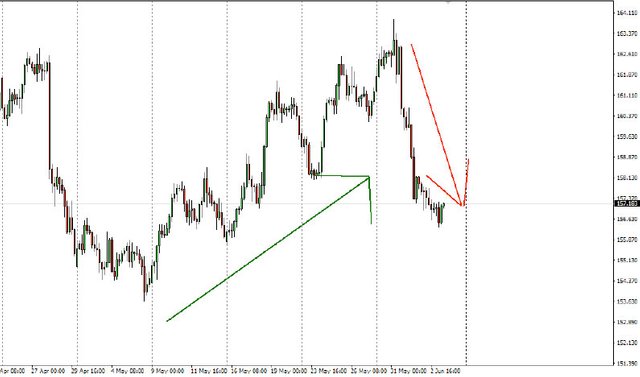
GBPJPY 4H Chart – Pepperstone MT4
Here is a potentially dangerous train of thought that many aspiring traders display in the attempt to build some kind of structure around market movement:
How can I trade trends profitably?
I can draw trend lines and play bounces off of them.
Trend lines are quite discretionary – playing bounces off a moving average could be better?
But which moving average? 5? 10? 20? 50? 100? And should it be simple? Exponential? Maybe something else?
Or maybe a super trend is something even better? After all, it has “trend” in its name.
Of course, every single thought listed above can be a potential setback as it can lead to endless optimisation and trial/error with the end effect of never making any progress.
So the chart of this aspiring trader starts to become something like this:
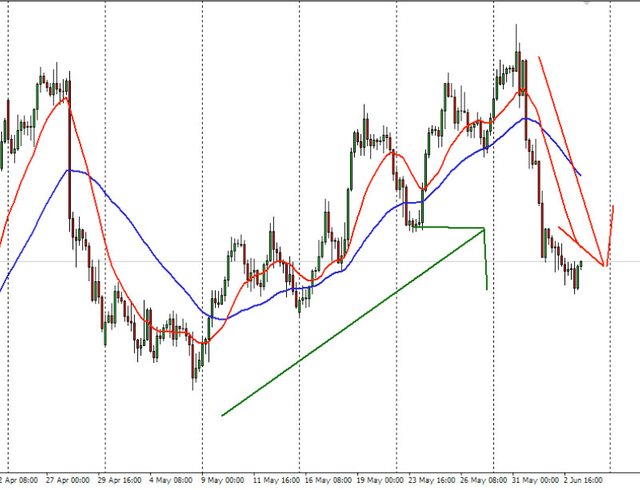
GBPJPY 4H – Pepperstone MT4
Let’s imagine the trader passes the first step and opts for a combination of moving averages. Attention naturally flows to the transition areas that usually confuse moving average traders in the first place.
When will the average hold?
When will it not hold?
Can I overlay some other indicator to help me identify potential false breaks?
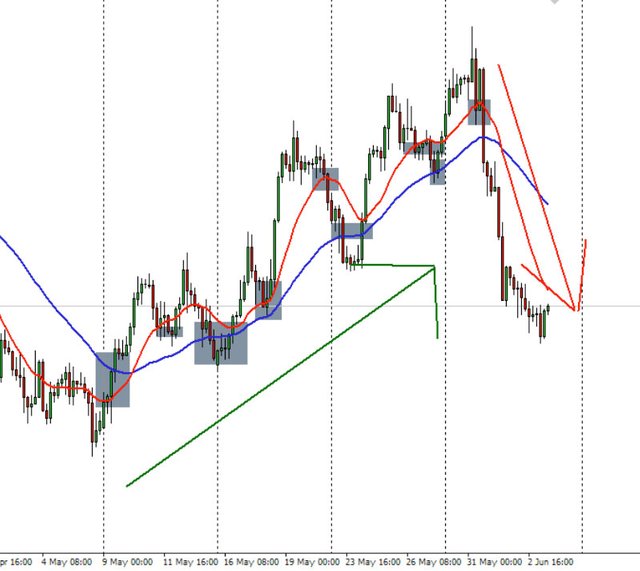
GBPJPY 4H Chart – Pepperstone MT4
Once again, the trader can be lured into endless permutations and trials that ultimately impede headway. So the trader eventually gives up trying to call proper and false breaks:
Maybe my issue is with my money management
I can attempt to pyramid off a moving average when it holds
I might still get stopped out when the average fails
Maybe I need a wider stop?
That might diminish my R:R
However, I’ll have a higher win%
The story can go on and on and on…
How to Simplify Your Decision Making
The key to keeping your trading approach simple yet subtle enough to keep you on the right side of the market is to ask yourself the correct questions when approaching the building phase. Here are some of the (wrong) questions and considerations which encourage complexity:
How do I get the entry right?
How can I qualify what a good setup looks like?
How can I pick the perfect asset/moment/etc?
I’m going to test/tweak/study what I do over & over again trying to weed out imperfections or work around past losses.
Instead, here are some questions and considerations that breed simplicity and deep understanding:
Does this approach make sense?
Is it logical?
Why does it work?
Can I strip it down and make it even more basic?
These questions lead to the discovery of principles. If you can uncover the principles behind what you do and why it works, you will not even necessarily need to back-test your method. You will simply need to wait for situations where the conditions are met going into the future.
What is the difference between a person tweaking/studying a method in the right way, and a person tweaking/studying the same method in the wrong way? The difference is in what they’re looking for, i.e. the analysis that’s happening.
Remember, it’s important to “wait for setups” and not “look for setups”. In the same way, if you go back to the drawing board asking the wrong questions and conducting the wrong analysis…
“how can I avoid the loss?”
“how can I get a better entry?”
…Then you are drawing complexity and difficulty towards you. You want to be asking the questions we discussed above – is it logical, and does it work? Why, and can it be any simpler? This leads you towards the essence of what you do. It will allow you to understand what you’re attempting to achieve better, and your mind will give you functional, flexible answers.
The proof is in the pudding
Let’s apply these correct questions to the example from above: you want to trade trends. How can we structure a simple, subtle and logical method using the right questions?
a) You want to trade trends → what is a trend?
It will require studying and exploring useful resources in an attempt to decipher the principles behind trends. But the studying will lead you to an understanding of the nature of trends. It is beyond the scope of this article but here are the starting points for this investigation.
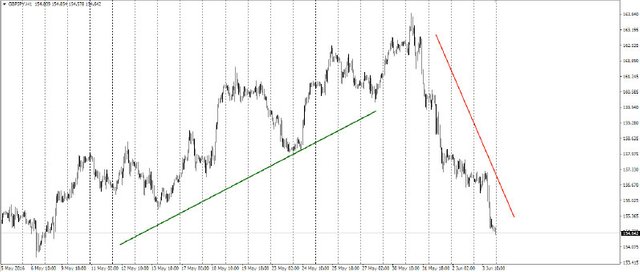
If price is moving evidently from the bottom left to the top right of your screen → uptrend If price is moving evidently from the top left to the bottom right of your screen → downtrend Source: Pepperstone MT4
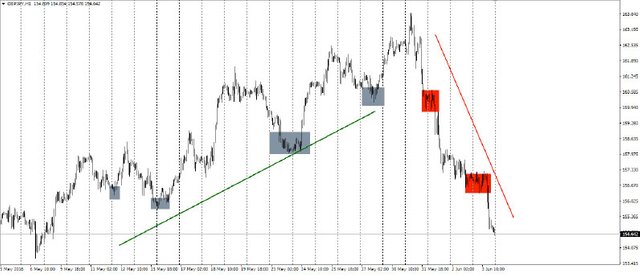
Evident Retracement/Swing lows being higher each time, and peaks being higher → uptrend Evident Retracement/Swing lows being lower each time, and peaks being lower → downtrend Source: Pepperstone MT4
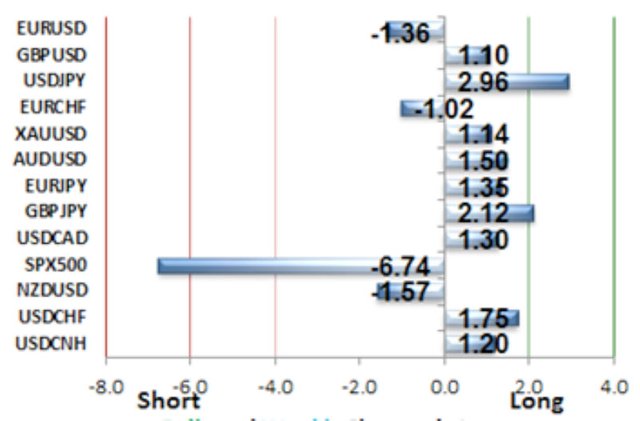
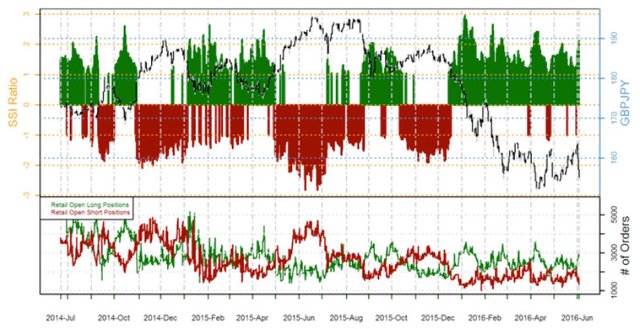
Retail Crowd is long GBPJPY in this recent downtrend → we are taking their liquidity by playing a well-established trend. By playing evident trends, we tend to be on the right side of the market, since most retail traders tend to fight trends in the futile attempt to pick tops & bottoms. Source: DailyFX Plus
b) How can you enter into the trend? Usually using pullbacks and breakouts. What is a pullback? What is a breakout?
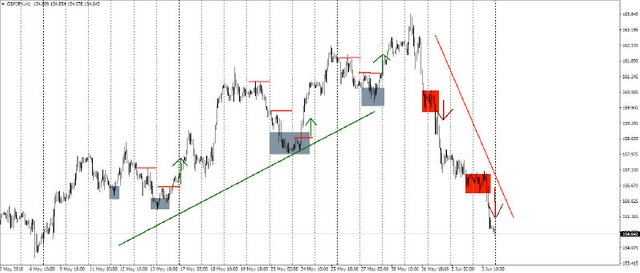
Pullbacks should find renewed participation before prior swing low areas. Track the lower highs (contra trend) and pay attention when momentum shifts back in line with the underlying trend.
Breakouts are usually evident consolidation areas following a strong momentum move.
c) Where do you place a solid stop loss and why?
d) How do you choose your position size and why?
Always ask yourself why a certain thing should work. Strip it back to a blank canvas, and just learn to pay attention. This is the essence of trading what you see, and not what you think.
Embrace Uncertainty
These questions, and the quest for simplicity, have a secondary objective: to keep your mind free of clutter and ready to accept the reality of the markets: markets are uncertain, and there is no way to avoid losses. By focusing on essentials you side-step the common mental mistakes:
analysis paralysis by information overload
seeking confidence through confluence of indicators
thinking the successful market participants use sophisticated methods
seeking the perfect system
The FX market is fragmented and information dissemination is limited. It’s impossible to know what the large market participants are doing in any given moment. The best you can do as a retail trader is to stay abreast of the primary influences & drivers like market movers & themes in play. (Refer to the sentiment article for an explanation of this, particularly with regard to the COT Report.)
But once again, don’t overthink it. If the market pulse is strong and evident, you’ll see it being displayed on your chart as the potential start of a new trend. As you absorb and process the information available, you’ll soon discover whether it’s the beginning of a new powerful trend, or whether it’s only a short term knee-jerk reaction.
So how do you make bold decisions and put your capital at risk in the face of inherently uncertain conditions? Through disciplined repetition of solid, simple, subtle, logical practices, which you understand thoroughly. If your heart believes, and your mind understands, you can do it. In other words: if you understand why you do what you do, and the principles behind what you do are logical, then gradually the confidence to act in the face of adversity will come.